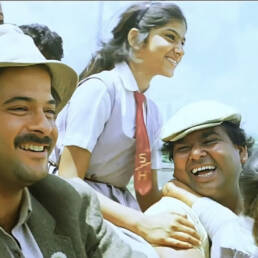You can take a Bengali away from Bengal during Durga Puja but you cannot take Durga Puja away from a Bengali wherever he/she is. Nearly a century ago, Netaji proved this much to the chagrin of the colonial administration.
In 1925, in a crackdown on the nationalist movement in Calcutta, several leading personalities were arrested by the Bengal govt. Prominent among them was a youth leader – Subhas Chandra Bose. He was deported to Mandalay Jail in Burma.
Like most British jails of the time, Mandalay also primarily housed political prisoners – revolutionaries and nationalists, many Bengalis among them. Some prominent faces undergoing incarceration at Mandalay were Biplabi Troilokya, Satyendra Mitra, Bipin Behari Ganguli and Surendra Mohan Ghosh among others.
As a child, Bose had grown up witnessing his mother celebrating the Durga and Kali puja festivals religiously. As an adult, he became a major patron of these festivals as a means of community bonding.
As autumn approached, the festive spirit entered even the dreaded confines of Mandalay jail. Bose, along with the other Bengali prisoners, decided to organize a Durga Puja inside the prison. Work began in earnest.
The estimated budget was 800 rupees. The prisoners raised 140 rupees among themselves and appealed to the prison administration for the rest. The prison super, Major Findlay, was sympathetic and appealed to the British govt. of Burma.
However, the appeal was summarily rejected. But Bose was not ready to back down. He argued that a government grant of 1200 rupees was given to European/Christian prisoners for the celebration of Christmas. With a precedent of religious grant in place, denying his appeal was akin to religious discrimination.
The govt. still refused to budge. It directed Major Findlay to release the 660 rupees and deduct the same from the prisoners’ pay. Led by Bose, the Indian prisoners sent a Memorandum to the Chief Secretary, Govt. of Burma.
With no response incoming, Bose led a fast in protest, joined by others. The news of the fast reached the mainland and soon spread like wildfire creating much discomfort for the colonial administration.
Finally, the Burma govt. backed down and approved release of thirty rupees per prisoner as Puja fund. Even though the money was less than demanded, it was a victory for Subhas and his group.
Pujo was celebrated inside Mandalay jail with much fervor. In a letter to his mother, Bose wrote,
“Today is Mahashtami. On this day, the life of Durga is being worshiped in the house of Bengal. We are fortunate to be able to find him in this jail as well……This year we will worship Shri Durga here. Mother probably didn’t forget us and that’s why we got an opportunity to worship her and that’s why organize her worship, even though we are so far away. She will take away from us the day after tomorrow and we will continue to see Sashru Nayan (tearful eyes). Once again the lit and cheerful atmosphere of worship will be absorbed by the dark and dead surroundings of the prison. I don’t know how many more years this sequence will go on. But if the mother keeps coming like this even once a year, then I think the life of imprisonment will not be very difficult.”
Bose’s stay at Mandalay Jail was tortuous. His health deteriorated due to terrible living conditions and neglect and he contracted tuberculosis. He was released in 1927.
The determination shown as a young man in Mandalay jail would go on to become his defining trait in coming days and earn him the sobriquet of “Netaji.”




